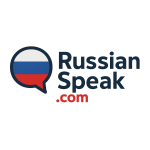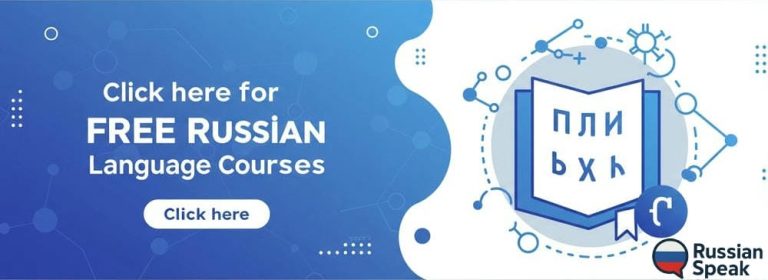When using Agile methodologies, the language shifts to include specific terms such as “Спра́нт” (spránt, Sprint), a short, focused period of work, and “Ретроспектива” (retrospektíva, Retrospective), a meeting where the team reflects on their process and outcomes. These words are not just jargon—they shape how teams collaborate, adapt, and succeed.
Understanding and using this vocabulary fluently is critical. It helps prevent misunderstandings, builds trust, and ensures that everyone—from stakeholders to team members—is on the same page. Whether you are managing deadlines, negotiating resources, or facilitating meetings, the right words make all the difference.
![]()
Table of Contents
ToggleUnderstanding Agile Methodologies: Key Concepts in Russian

Agile methodologies are a modern approach to managing projects that focus on flexibility, quick responses to change, and working in small steps. This method helps teams to deliver results more often and adapt to new information or challenges as they come up.
Core Principles of Agile
At the heart of agile is a set of principles designed to improve how projects are handled:
- Customer collaboration over contract negotiation (Сотрудничество с заказчиком важнее переговоров по контракту, Sotrudnichestvo s zakazchikom vazhnee peregovorov po kontraktu): This means working closely with clients to make sure their needs are met.
- Responding to change over following a fixed plan (Гибкость в ответ на изменения важнее следования плану, Gibkost’ v otvet na izmeneniya vazhnee sledovaniya planu): Teams adjust their plans as new information arises instead of sticking rigidly to old plans.
- Deliver working software frequently (Частая поставка работающего ПО, Chastaya postavka rabotayushchego PO): Releasing small parts of the product regularly helps catch problems early and keeps everyone informed.
These principles encourage an environment where teams are flexible, innovative, and focused on customer value.
Scrum Framework Explained
Scrum is one of the most popular frameworks within agile methodologies. It organizes work into short, fixed periods called sprints (спринты, sprinty), usually lasting 2-4 weeks. During each sprint, teams complete a set amount of work from a prioritized list called the product backlog (бэклог продукта, beklog produkta).
Key roles in Scrum include:
- Product Owner (владелец продукта, vladelyets produkta): Represents the customer and prioritizes work.
- Scrum Master (скрам-мастер, skram-master): Helps the team follow Scrum practices and removes obstacles.
- Development Team (команда разработчиков, komanda razrabotchikov): The people who build the product.
Scrum promotes regular meetings — like daily stand-ups (ежедневные стендапы, ezhednevnye stendapy) — where team members share progress and challenges. After each sprint, a review meeting (обзор спринта, obzor sprinta) evaluates the work done, and a retrospective (ретроспектива, retrospektiva) discusses how to improve the process.
Benefits of Agile Methodologies
Using agile methods brings several advantages:
- Faster delivery of usable products: Frequent releases allow customers to see progress regularly.
- Better communication: Regular meetings keep everyone aligned.
- Flexibility to change: Teams can adjust priorities based on feedback or market changes.
- Increased team motivation: Empowered teams take ownership and find creative solutions.
Important Russian Vocabulary for Agile
- Agile methodology — гибкая методология (gibkaya metodologiya)
- Iteration — итерация (iteratsiya)
- Sprint — спринт (sprint)
- Backlog — бэклог (beklog)
- Stand-up meeting — стендап встреча (stendap vstrecha)
- Product increment — приращение продукта (prirashchenie produkta)
- User story — пользовательская история (polzovatelskaya istoriya)
Agile methodologies offer a practical way to manage complex projects by breaking them down into manageable parts, encouraging communication, and being ready to change direction quickly. Knowing the basic concepts and vocabulary in both English and Russian can help project managers work effectively across languages and cultures.
Ultimately, understanding these concepts equips project managers with the tools necessary to navigate the complexities of modern project environments effectively.
Essential Project Management Terms— Важные термины управления проектами
Project management involves many specialized terms that help team members communicate clearly and manage tasks efficiently. For English speakers learning Russian, understanding these terms both in English and Russian can be very useful, especially when working with Russian-speaking teams or reading project documents in Russian.
Below is an explanation of the key project management terms, followed by a table with important related Russian terms, their pronunciations, and English definitions.
Key Project Management Terms
Scope (Объем проекта)
The scope defines what is included and excluded in a project — essentially, the boundaries and deliverables. For example, if you are managing the development of a mobile app, the scope might include designing the user interface and coding the app but exclude marketing activities.
Milestone (Веха)
A milestone marks a significant event or achievement in the project timeline. For example, completing the app design or launching a beta version can be milestones.
Stakeholder (Заинтересованное лицо)
Stakeholders are people or groups who are affected by or have an interest in the project. This may include clients, team members, managers, or end users.![]()
Deliverable (Результат)
Deliverables are the outputs produced during the project, which can be tangible (like a report or product) or intangible (like software or training sessions).
Related Russian Project Management Terms
| Russian (Cyrillic) | English Phonetic | English Definition |
|---|---|---|
| Планирование | Plan-i-ro-van-ye | Planning |
| Управление рисками | Up-rav-len-ye ris-ka-mi | Risk management |
| Задача | Za-da-cha | Task |
| Команда | Ko-man-da | Team |
| Сроки | Sro-ki | Deadlines / Timeframes |
| Ресурсы | Re-sur-sy | Resources |
| Контроль качества | Kont-rol ka-chest-va | Quality control |
| Бюджет | Byu-dzhet | Budget |
| Отчет | Ot-chet | Report |
| Риски | Ris-ki | Risks |
Familiarity with these terms allows project managers to navigate the complexities of their roles, ensuring clear communication and alignment among team members. Mastery of this vocabulary empowers project managers to lead their teams effectively through each stage of the project lifecycle.
Agile Roles and Responsibilities
In modern project management, clearly understanding the roles and responsibilities within an Agile framework is essential for achieving team success and delivering high-quality products efficiently.
![]()
Scrum Master (Скрам-мастер)
The Scrum Master plays a critical role as a facilitator and servant leader within the Agile team. Their primary responsibility is to ensure that the team follows Scrum principles and practices correctly. This includes organizing and moderating Scrum ceremonies such as daily stand-ups (ежедневные совещания), sprint planning (планирование спринта), sprint reviews (обзор спринта), and retrospectives (ретроспектива). The Scrum Master works to identify and remove impediments (препятствия) that could slow down the team’s progress, whether these are technical, organizational, or interpersonal. Additionally, they protect the team from external distractions and help foster an environment of continuous improvement (непрерывное улучшение).
![]()
Product Owner (Владелец продукта)
The Product Owner acts as the voice of the customer and key stakeholders. Their main responsibility is managing the product backlog (бэклог продукта), which is a prioritized list of features, bug fixes, and technical tasks that guide the team’s work. The Product Owner continuously refines and prioritizes this backlog based on customer feedback, market changes, and business goals to maximize the value delivered by the team. They ensure clear communication of requirements and acceptance criteria (критерии приемки) to the team, facilitating alignment between stakeholders’ expectations and the development efforts. Effective Product Owners balance competing priorities and make informed decisions to keep the project focused on delivering business value.
![]()
Agile Coach (Аджайл-коуч)
An Agile Coach supports teams and organizations in adopting Agile methodologies beyond just Scrum. They offer guidance on Agile principles, frameworks like Kanban or SAFe, and best practices to improve team collaboration, productivity, and quality. Coaches work not only with teams but also with leadership to foster Agile culture (культура Agile) throughout the organization. Their role involves mentoring individuals, facilitating workshops, resolving conflicts, and helping teams overcome resistance to change. By focusing on continuous learning (непрерывное обучение) and transformation, Agile Coaches enable sustained improvements in how teams deliver value.
![]()
Team Members (Члены команды)
Team Members execute the tasks required to build the product increment during each sprint. They are cross-functional professionals who collaborate closely, sharing knowledge and supporting each other to meet sprint goals. Responsibilities include writing code, testing, designing, analyzing requirements, and other activities necessary to complete backlog items. Team members are self-organizing (самоорганизующаяся команда), meaning they decide internally how best to accomplish their work without relying on external micromanagement. Open communication, mutual respect, and accountability (ответственность) are key attributes that help them work effectively as a unit.
Together, these roles create an interactive and flexible environment that encourages innovation, quick adaptation to change, and ownership of results. Agile frameworks emphasize transparency (прозрачность), inspection (инспекция), and adaptation (адаптация), ensuring continuous delivery of value even in fast-paced or uncertain conditions. Understanding these roles deeply allows organizations to build strong Agile teams capable of meeting complex challenges with confidence.
![]()
Key Russian phrases:
- Scrum Master — Скрам-мастер
- Product Owner — Владелец продукта
- Agile Coach — Аджайл-коуч
- Team Members — Члены команды
- Product Backlog — Бэклог продукта
- Daily Stand-up — Ежедневные совещания
- Sprint Planning — Планирование спринта
- Sprint Review — Обзор спринта
- Retrospective — Ретроспектива
- Impediments — Препятствия
- Continuous Improvement — Непрерывное улучшение
- Acceptance Criteria — Критерии приемки
- Agile Culture — Культура Agile
- Continuous Learning — Непрерывное обучение
- Self-organizing Team — Самоорганизующаяся команда
- Accountability — Ответственность
- Transparency — Прозрачность
- Inspection — Инспекция
- Adaptation — Адаптация
Together, these roles create a dynamic environment that fosters innovation, adaptability, and accountability, ultimately driving project success in a rapidly changing landscape.
Key Agile Practices and Frameworks -Ключевые практики и фреймворки Agile
Agile practices and frameworks are tools that help teams work better together and get more done, especially in software development. Agile focuses on working step-by-step, getting feedback often, and changing plans as needed to meet goals faster.
Basic Agile Practices
1. Sprint Planning (Планирование спринта)
This is a team meeting where everyone decides what they will work on during the next sprint (a short, fixed period of work, usually 1-4 weeks). The team sets goals and breaks down tasks.
Example: A team might decide to complete three user stories during the next two weeks.
2. Iteration Reviews (Обзор итерации)
At the end of each sprint, the team meets to show what they have completed and get feedback from stakeholders (people interested in the project). This helps make sure the product is on the right track.
Example: The team demonstrates a new feature to the product owner and gathers comments.
3. Daily Stand-ups (Ежедневные стендапы)
These are short daily meetings (usually 15 minutes) where each team member says what they did yesterday, what they will do today, and any problems they have.
Example: “Yesterday I fixed a bug; today I will start testing; I need help with the database.”
4. Retrospectives (Ретроспективы)
After each sprint, the team meets to talk about what went well, what didn’t go well, and how to improve for the next sprint.
Example: The team decides to improve communication because some tasks were unclear.
Related Russian Terms for Agile Practices
| Cyrillic | English Phonetic | English Definition |
|---|---|---|
| Спринт планирование | Sprint planirovaniye | Sprint planning |
| Обзор итерации | Obzor iteratsii | Iteration review |
| Ежедневный стендап | Ezhednevny sten-dap | Daily stand-up |
| Ретроспектива | Retrospektiva | Retrospective |
| Задача | Zadacha | Task |
| Итерация | Iteratsiya | Iteration |
| Команда | Komanda | Team |
| Заинтересованные лица | Zainteresovannyye litsa | Stakeholders |
| Обратная связь | Obratnaya svyaz | Feedback |
| Гибкая методология | Gibkaya metodologiya | Agile methodology |
| Пользовательская история | Polzovatelskaya istoriya | User story |
Through these practices, teams can achieve greater flexibility and deliver high-quality software that meets user needs.
Common Project Management Tools and Software
Effective project management depends greatly on the use of specialized tools and software that help organize tasks, improve communication, and keep projects on track. These solutions are designed to simplify complex workflows and boost collaboration among team members.
Project tracking software plays a critical role in overseeing the progress of various tasks, making sure deadlines are respected, and optimizing the use of resources. Well-known platforms like Asana, Trello, and Jira are widely used because they provide user-friendly interfaces along with powerful features. For example:
- Asana (Асана) allows teams to create detailed task lists, set deadlines, assign responsibilities, and track progress through visual timelines.
- Trello (Трелло) uses a card-and-board system that makes organizing tasks intuitive and flexible, ideal for smaller teams or projects requiring a more visual approach.
- Jira (Джира) is particularly popular among software development teams for its advanced issue tracking and sprint planning capabilities.
These tools enable teams to visualize the entire project workflow, prioritize important tasks, and automate routine processes. This not only saves time but also reduces the likelihood of errors. Another important aspect is software integration (интеграция программного обеспечения), which connects different applications such as file storage systems (e.g., Google Drive, Dropbox) and communication platforms (e.g., Slack, Microsoft Teams). Integration creates a unified system where information flows smoothly between tools, minimizing disruption and increasing productivity.
Using project management software brings several benefits:
- Improved accountability (повышенная ответственность): Team members can see their assignments clearly, receive reminders, and report updates.
- Enhanced flexibility (гибкость): Teams can adjust plans quickly in response to new information or unexpected challenges.
- Better resource allocation (распределение ресурсов): Managers can track how time, budget, and manpower are being used and make adjustments as needed.
- Stronger collaboration (сотрудничество): Centralized communication reduces misunderstandings and keeps everyone informed.
Utilizing these tools are essential for successfully delivering projects on time and within budget. They support transparency, adaptability, and teamwork—qualities necessary for managing today’s dynamic work environments. Incorporating these tools effectively promotes innovation and continuous improvement throughout the project lifecycle.
Effective Communication in Agile Teams

Effective communication is a cornerstone of success in agile teams, playing a critical role in promoting collaboration (сотрудничество, sotrudnichestvo) and maintaining clear alignment on project goals. Agile methodologies prioritize open and transparent dialogue (диалог, dialog) among team members, enabling them to share ideas, raise concerns, and provide feedback without hesitation. This culture of openness fosters trust (доверие, doverie) and empowers individuals to contribute their unique perspectives, which is essential for creative problem-solving and innovation.
Agile teams rely heavily on structured, yet flexible communication practices to keep everyone informed and engaged. Regular meetings such as daily stand-ups (or daily scrums) serve as brief check-ins where team members report on progress, discuss roadblocks, and coordinate tasks. These meetings enhance team visibility and accountability, ensuring that potential issues are identified and addressed promptly before they escalate.
Sprint reviews (обзоры спринтов, obzory sprintov) and retrospectives (ретроспективы, retrospektivy) are other key communication events in agile workflows. Sprint reviews involve stakeholders and team members coming together to demonstrate completed work, gather feedback, and realign priorities for the next sprint. This continuous feedback loop helps ensure that the product evolves according to user needs and business objectives. Retrospectives focus on the team’s internal processes, encouraging reflection on what worked well and what needs improvement. By regularly integrating lessons learned, agile teams drive ongoing process enhancement and foster a culture of continuous improvement.
In addition to meetings, agile teams often use collaborative tools such as shared digital boards (e.g., Jira, Trello), instant messaging platforms (e.g., Slack, Microsoft Teams), and video conferencing solutions to facilitate real-time communication across distributed teams. These tools help maintain transparency (прозрачность, prozrachnost) and promote asynchronous communication when team members work across different time zones.
Research shows that effective communication in agile teams leads to faster decision-making, reduced misunderstandings, higher team morale, and improved product quality. It also supports adaptability by enabling teams to respond quickly to changing requirements or unexpected challenges. Overall, communication in agile teams is not just about exchanging information but about building a shared understanding that drives collective ownership of the project’s success.
Risk Management Vocabulary -Лексика Управления Рисками
Risk management is essential in project management to identify, evaluate, and reduce threats that could affect the project outcome. For English speakers learning Russian, understanding the key terms in both languages helps grasp the concepts better and communicate effectively in Russian-speaking environments.
Expanded Explanation with Examples
Risk Assessment (оценка риска)
This is the process of identifying potential risks in a project and analyzing their possible impact and how likely they are to happen.
Example: Before starting a construction project, the team performs a risk assessment to see if weather conditions could delay the work.
Risk Tolerance (толерантность к риску)
The level of risk an organization or individual is willing to accept without taking action.
Example: A company with low risk tolerance might avoid projects with uncertain outcomes.
Contingency Plan (план действий на случай непредвиденных обстоятельств)
A backup plan prepared in case identified risks actually occur.
Example: If the supplier delays delivery, the contingency plan might involve using an alternative supplier.
Risk Register (реестр рисков)
A document or tool used to record all identified risks, their analysis, and planned responses.
Example: The project manager updates the risk register weekly to track new and ongoing risks.
Related Russian Terms Table
| Russian (Cyrillic) | English Phonetic | English Definition |
|---|---|---|
| управление рисками | upravleniye riskami | risk management |
| оценка риска | otsenka riska | risk assessment |
| вероятность риска | veroyatnost’ riska | risk probability |
| влияние риска | vliyanie riska | risk impact |
| толерантность к риску | tolerantnost’ k risku | risk tolerance |
| план действий на случай непредвиденных обстоятельств | plan deystviy na sluchay nepredvidennykh obstoyatel’stv | contingency plan |
| реестр рисков | reyestr riskov | risk register |
| смягчение риска | smyagcheniye riska | risk mitigation |
| реагирование на риск | reagirovaniye na risk | risk response |
| вероятность и влияние | veroyatnost’ i vliyanie | probability and impact |
| анализ рисков | analiz riskov | risk analysis |
Mastery of this vocabulary empowers professionals to foster resilience and adaptability within their teams, ultimately contributing to project success.
Measuring Success: Metrics and KPIs in Russian
In project management, measuring success is crucial for ensuring that projects meet their goals efficiently and effectively. Metrics and Key Performance Indicators (KPIs) are fundamental tools used to assess how well a project is performing. Understanding these concepts in both English and Russian can help bilingual teams communicate clearly and maintain focus on project objectives.
Metrics (Метрики / Metriki) are quantitative measures that track various aspects of project performance. They provide objective data about progress, quality, costs, and time. Metrics help identify trends and areas that may require attention.
Key Performance Indicators (Ключевые показатели эффективности / Klyuchevye pokazateli effektivnosti, often abbreviated as KPI) go a step further by focusing on the most critical factors that determine project success. KPIs are carefully selected to align with the project’s strategic goals.
Important KPIs in Project Management (Важные KPI в управлении проектами)
- Project Timeline (Сроки проекта / Sroki proekta)
This KPI tracks whether the project milestones (этапы / etapy) are being achieved on schedule. Meeting deadlines is essential to avoid delays that could increase costs or reduce customer satisfaction. Project managers often use tools like Gantt charts (диаграммы Ганта / diagrammy Ganta) to visualize progress. - Budget Adherence (Соблюдение бюджета / Soblyudenie byudzheta)
Monitoring financial performance against the planned budget (плановый бюджет / planovyy byudzhet) helps control costs. Staying within budget ensures better resource allocation and project profitability. Overspending can signal issues requiring immediate action. - Stakeholder Satisfaction (Удовлетворённость заинтересованных лиц / Udovletvorennost zainteresovannykh lits)
This measures how happy clients (клиенты / klienty), team members (члены команды / chleny komandy), and other stakeholders are with the project’s outcomes and process. Surveys (опросы / oprosy) and feedback sessions (сессии обратной связи / sessii obratnoy svyazi) are common methods to assess this.
Additional Metrics Often Used:
- Quality of Deliverables (Качество результатов / Kachestvo rezultatov): Ensuring outputs meet required standards.
- Resource Utilization (Использование ресурсов / Ispolzovanie resursov): Tracking how effectively people, equipment, and materials are used.
- Risk Management Effectiveness (Эффективность управления рисками / Effektivnost upravleniya riskami): Measuring how well risks are identified and mitigated.
Why These Indicators Matter
Using metrics and KPIs allows project managers to:
- Identify problems early.
- Make data-driven decisions.
- Communicate progress clearly to all stakeholders.
- Align team efforts with strategic goals.
In Russian project management discussions, you might hear phrases like:
- “Давайте проверим наши ключевые показатели эффективности.”
(“Let’s check our key performance indicators.”) - “Соблюдение сроков — важный показатель успеха проекта.”
(“Meeting deadlines is an important indicator of project success.”) - “Нам нужно улучшить удовлетворённость заинтересованных лиц.”
(“We need to improve stakeholder satisfaction.”)
Understanding and using these terms helps create a shared language for project success evaluation, making collaboration smoother in bilingual environments.
Frequently Asked Questions
What Are the Benefits of Using Agile in Project Management?
Utilizing agile in project management offers significant benefits, including enhanced project flexibility and the ability to adapt to changing requirements. This approach fosters collaboration, promotes continuous improvement, and ultimately leads to higher quality outcomes and increased stakeholder satisfaction.
How Can I Transition From Traditional to Agile Project Management?
To shift from traditional methodologies, one should adopt agile frameworks and implement effective change strategies. This approach fosters flexibility, collaboration, and iterative progress, allowing teams to embrace change and enhance efficiency in their workflows.
What Challenges Might I Face When Adopting Agile Methodologies?
When adopting agile methodologies, individuals may encounter resistance to change and challenges in team dynamics. These factors can hinder collaboration and adaptation, requiring careful management to guarantee a smooth shift and foster an agile mindset.
How Do Cultural Differences Affect Agile Project Management in Russia?
Cultural differences greatly influence agile project management in Russia, as varying cultural norms and communication styles can affect team dynamics, decision-making processes, and collaboration, ultimately impacting the effectiveness of agile methodologies and project outcomes.
Are There Specific Agile Certifications Available in Russian?
The Russian market offers various Agile certifications tailored for professionals seeking to enhance their skills. These certifications cater to local demands, promoting Agile methodologies and ensuring practitioners are well-equipped to navigate project challenges effectively.



